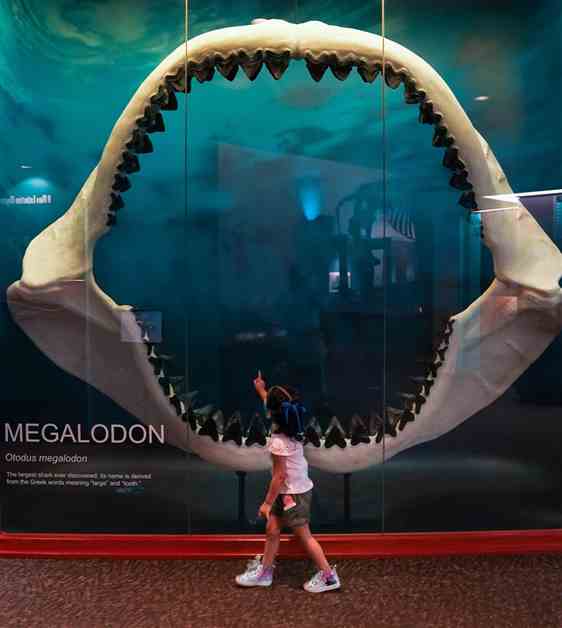National Megalodon Day is coming up on June 15, and here are five interesting facts about this prehistoric shark. The megalodon was a massive shark that lived millions of years ago, and it was three times the size of a great white shark, measuring between 50 to 60 feet long. Despite their enormous size, the only evidence of megalodons that remains today are their teeth, as their skeletons were made of cartilage.
Megalodons had an impressive mouth full of 276 teeth, with some teeth reaching up to 7 inches in length. These sharks could go through a set of teeth every couple of weeks, producing up to 40,000 teeth in a lifetime. The megalodon was at the top of the food chain and could eat a variety of prey including whales, dolphins, and other sharks. In fact, it was estimated that they needed to consume around 2,500 pounds of food daily to sustain their massive size.
Although megalodon teeth have been found in various parts of the United States, including along the West Coast and the East Coast from the Carolinas to Florida, it is unclear whether these massive sharks ever lived in Mississippi. The state was covered by oceanic water millions of years ago, but it was likely before the time of the megalodons. However, there is a mythical tale of a megalodon in Sardis Lake in Mississippi, which was popularized in the book “Mississippi Megalodon” by Johnathan Rand.
As we celebrate National Megalodon Day, it’s fascinating to learn about these ancient creatures that once roamed the oceans. While megalodons may be extinct today, their legacy lives on through the impressive teeth they left behind. Whether you’re a shark enthusiast or simply intrigued by the mysteries of the past, the story of the megalodon continues to captivate our imagination.

